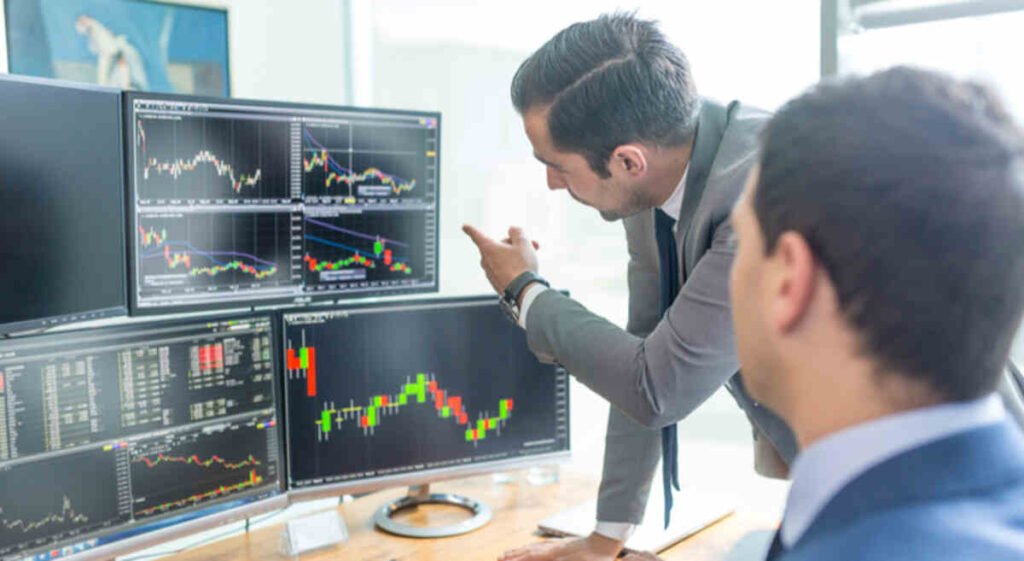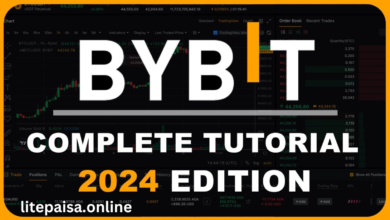
How to Start Trading In today’s fast-paced world, trading has become an attractive way to earn profits. Whether you’re looking to invest for the long term or make short-term gains, understanding how to start trading is essential. This comprehensive guide provides a detailed look into the steps needed to get started, the types of markets available, and the strategies that can help you succeed. By mastering the art of trading, you can achieve financial independence and control over your investments.
What is Trading?
Unlike investing, which typically involves holding assets for a long time, trading is often short-term and aims to capitalize on market fluctuations. While trading can be lucrative, it requires knowledge, discipline, and strategy to be successful.
Types of Trading Markets
Before diving into trading, it’s crucial to understand the different markets where trading takes place. Here are some of the main types:
- Stock Market: This is where individuals and institutions buy and sell shares of publicly traded companies. Stock trading can be done on exchanges like the NYSE or NASDAQ.
- Forex Market: The foreign exchange market (Forex) is where currencies are traded. It’s the largest market in the world, operating 24 hours a day, and offers opportunities to trade pairs like USD/EUR, GBP/JPY, and many others.
- Commodity Market: In this market, traders deal with physical goods like gold, oil, and agricultural products. Commodity trading can be volatile but offers great potential for profit.
- Cryptocurrency Market: A relatively new market, cryptocurrency trading involves buying and selling digital assets like Bitcoin, Ethereum, and other altcoins. This market is highly speculative and can be extremely profitable or risky.
- Derivatives Market: Here, traders deal with contracts that derive their value from an underlying asset, such as futures and options. These contracts can help hedge risk but require a strong understanding of the market mechanics.
Steps How to Start Trading

Choose Your Trading Platform How to Start Trading
The first step in trading is selecting a reliable trading platform or broker. How to Start Trading Platforms like TD Ameritrade, Robinhood, and Interactive Brokers offer user-friendly interfaces and access to a wide range of markets.
- Regulated by financial authorities.
- Offers low fees for trades.
- Has educational resources to help you learn.
Understand the Market You Want to Trade In
Each market operates under different conditions, and understanding the market you’re trading in is vital. For instance:
- Stock traders should focus on fundamental analysis, such as company earnings and macroeconomic factors.
- Forex traders must keep an eye on economic indicators, interest rates, and political events that can affect currency values.
- Crypto traders need to stay informed about blockchain technology and regulatory changes.
Develop a Trading Strategy How to Start Trading
Successful traders rely on solid strategies to minimize risk and maximize profit. Some popular trading strategies include:
- Day Trading: This involves buying and selling securities within the same day to take advantage of small price movements.
- Swing Trading: Here, traders hold positions for a few days or weeks to capitalize on expected price swings.
- Position Trading: In this long-term strategy, traders hold assets for months or even years.
- Scalping: A high-frequency strategy where traders make numerous small trades in a day, profiting from tiny price movements.
Learn Technical and Fundamental Analysis
Technical analysis involves studying past price movements and patterns to predict future market behavior. Key indicators include:
- Moving Averages (MA): A tool that smoothens price data to help identify trends.
- Relative Strength Index (RSI): Measures the speed and change of price movements to determine if an asset is overbought or oversold.
- Bollinger Bands: Help identify market volatility by comparing a security’s price to its moving average.
On the other hand, fundamental analysis focuses on a company’s financial health, such as earnings reports, balance sheets, and industry trends. Forex and commodity traders might focus on macroeconomic data like GDP growth, inflation rates, and interest rates.
Start with a Demo Account How to Start Trading
Before risking real money, it’s wise to start with a demo account. Many platforms offer virtual trading environments where you can test your strategies in real-time with fake money. This is an invaluable tool for beginners to gain confidence and refine their techniques without incurring losses.
Manage Risk
Risk management is the cornerstone of successful trading. Without proper controls, even the best strategies can fail. Some essential risk management practices include:
- Diversification: Spread your investments across different markets and asset classes to reduce risk exposure.
- Position Sizing: Only risk a small percentage (e.g., 1-2%) of your total capital on any single trade.
Psychological Aspects of How to Start Trading

Emotional control, discipline, and patience are key traits that separate successful traders from those who fail.
- Avoiding FOMO (Fear of Missing Out): Many traders make impulsive decisions based on the fear of missing out on a profitable opportunity, which often leads to losses.
- Managing Stress: The volatility of markets can be stressful. Stick to your strategy and avoid trading based on emotional reactions.
- Learning from Losses: Every trader experiences losses. How to Start Trading The important thing is to learn from these mistakes and continually improve.
Continuing Education and Staying Informed
The financial markets are constantly evolving, and to stay competitive, traders need to continually educate themselves. Subscribe to financial news platforms, follow market trends, and participate in webinars or courses to enhance your skills.
Schwager provide invaluable insights into trading psychology and strategies. How to Start Trading Additionally, online courses and tutorials can help build a strong foundation.
Conclusion
Starting a trading journey can be both exciting and challenging. With the right knowledge, tools, and strategies, you can position yourself for success in the financial markets. By choosing a reliable trading platform, developing a sound strategy, and practicing risk management, you’ll be well on your way to becoming a successful trader. Remember, patience and continuous learning are the keys to long-term success.
Read More: Best Day Trading Stocks




